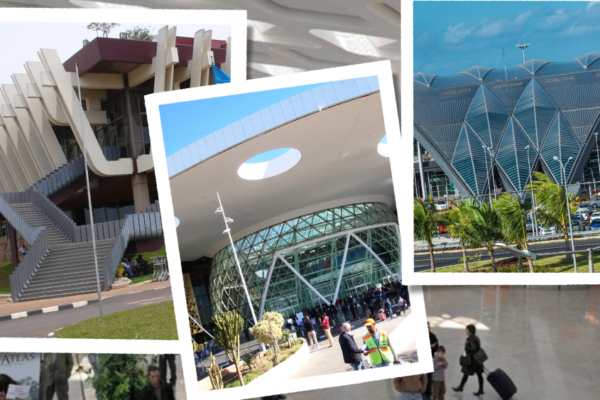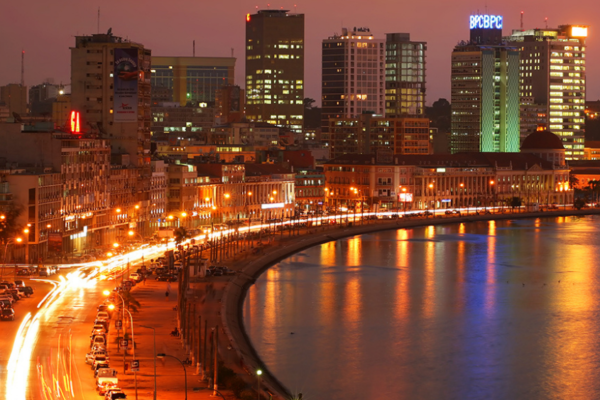Nigerian Fashion has no such vocabulary as subtle. It is chaos in neon colours, where spray-painted danfo buses shuttle countless people daily to numerous brightly-painted pubs, cafes, and places that never sleep. This unruly statement also runs through the Nigerian fashion industry.
Nigeria is undeniably the continent’s fashion capital, with a population of 186 million and Africa’s highest GDP. The film and music industries have established themselves on a global stage, with Afrobeats and Nollywood. The global fashion sector is more than $2.4 trillion. Africa’s share is estimated to be roughly $31 billion, or about 1.3 per cent of the total. As designers flourish and local e-commerce platforms like Fashpa, Jumia, and Konga continue to thrive, Africa’s share will increase significantly. The country’s scene has become so dominant that many Africans now argue that the sector is being “Nigerianised.”
The Evolution Through The Decades
Nigerian fashion has always been unique, loud, and flamboyant. The Nigerian fashion industry has experienced multiple transformations through the years. It morphs by combining old and new elements while maintaining its charm and flavour.
The Sixties
In the sixties, most Nigerian women wore long gowns and hats. The women wore permed, well-sprayed Afros and fitting and roomy clothing, depending on their preferences. Mini skirts and dresses were trends that swept the fashion industry. Men adopted bright colours at this time, and there was a fascination with patterns and patterned materials. Mini dresses with ladylike silhouettes were popular among women, while males wore brightly coloured, patterned shirts.
The Seventies
The fashion for ladies was oleku, a baggy-sleeved Buba worn over an iro that stopped from just above the knees to mid-thigh. Men donned agbada and dashikis, which have made a dramatic resurgence in recent years. It was all about the colours for a more western vibe. Jerry curls and perms for both sexes became popular in the 1970s. Around this time, carrying accessories and matching clothing became quite popular, and males followed this trend.
The Eighties
In the 1980s, the bigger, the better. Maxi skirts for the ladies, oversized suits for the gentlemen, massive jewellery, big perms, and unruly afros were all the rage. Some of the fads may appear absurd to us today, such as leg warmers, a sweater, and a tiny skirt all at the same time, in vivid colours.
The Nineties
Fashion began to shift subtly, becoming more retro, pop, and trendy, with a strong American influence. Capri pants, miniskirts, and scousers — a pair of shorts and skirts sewn together – were among the first to arrive. Boubous were the most popular native dress of the time. Men’s fashion transformed as well. Trouser hems became thinner and narrower as the waist grew looser and the hips became tighter. Men shaved their heads and wore buzz cuts and fade instead of curl activators and relaxers.
From The 2000s To Present
Although American fashion continues to influence how many individuals dress, many Nigerians don native clothes for formal and social gatherings. The current hair trends like Brazilian, Peruvian, Bone straight, or Chinese hair are no longer esteemed. More women are ditching relaxers and embracing their natural hair. It is a trend that is unique at this moment. Shoes are a blend of eras, with Nigerian footwear designers creating western shoe styles yet employing traditional materials such as Aso-oke. Also, old-school styles like bell bottoms and headscarves are coming back.
Fashionable Lagosians used to go to traditional tailors or look for high-end Western clothing. Today they look to a new era of trendy local designers redefining style. It’s a symbol of Nigeria’s recent economic growth and pride in its talent.
Reni Folawiyo’s multi-floored red-painted concept store, which he opened in 2015, is an attraction of its own. It features rows of beautiful clothes and furnishings, the majority of which are local.
The Start Of A New Era For Nigerian Fashion
Nigeria’s film business exploded when they restored democracy. By the mid-2000s, Nollywood, based in Lagos, was the world’s most prolific film industry after Bollywood. Nollywood’s A-Listers living mainly in Lagos dictated fashion. In 2006, the celebrity site Bella Naija popped on the internet. People began to notice celebrities’ fashion choices. Designers were interested in dressing them. The upper-middle class had emerged, and they had purchasing power. The public began to flock toward local labels.”
For most Lagosians, Western labels such as Prada and Moschino still held cultural clout. That began to shift in 2007. The Arise (Africa Rises) Fashion Week debuted in Lagos that year. World famous designers like Grace Bol and Ozwald Boateng and models visited Nigeria. It brought Nigeria a flavour of fashion weeks. After a six-year break, Arise made a comeback. Lagos Fashion Week, which started in 2011 and is currently Nigeria’s flagship fashion event, joined.
Nigerian Fashion Going Global
Instagram expedited the movement, bringing even more global exposure. This year, supermodel Naomi Campbell paid a visit to the country, promoting local designers and advocating for the launch of Vogue Africa. It symbolised the international importance of Lagos as Africa’s fashion capital and the significance of the African fashion industry. Amaka Osakwe, who created the brand Maki Oh in 2010, is one of Nigeria’s most fascinating designers. During a state visit to South Africa in 2013, then-US First Lady Michelle Obama wore one of Osakwe’s chiffon blouses. The event thrust Maki Oh onto the international stage as a result of this.
There Is Work To Do
However, international recognition does not always imply a change in Nigerian consumers’ purchasing behaviour. Many Nigerians still choose high-end clothing from Europe and the United States, while others prefer to hire a local tailor familiar with the country’s time-honoured styles. 70% of Nigerians choose to visit Aso Ebi tailors to have made-to-measure garments produced for them.
While the rising interest in Nigerian fashion in Lagos has increased traditional tailors, experts worry that the market is becoming saturated with low-end work, ending in a scarcity of skilled professionals. Experts say that more tailors should follow the lead of Nigeria’s well-known designers. Tailors should receive training to enhance and orient them toward producing good work and completing jobs on time.
Nigerian fashion is a trailblazer that is leading fashion in the continent. With time Nigerian fashion will become a global phenomenon, especially for those who like a blend of old and new styles.
Also, read Tongoro: African Style And Creativity.




